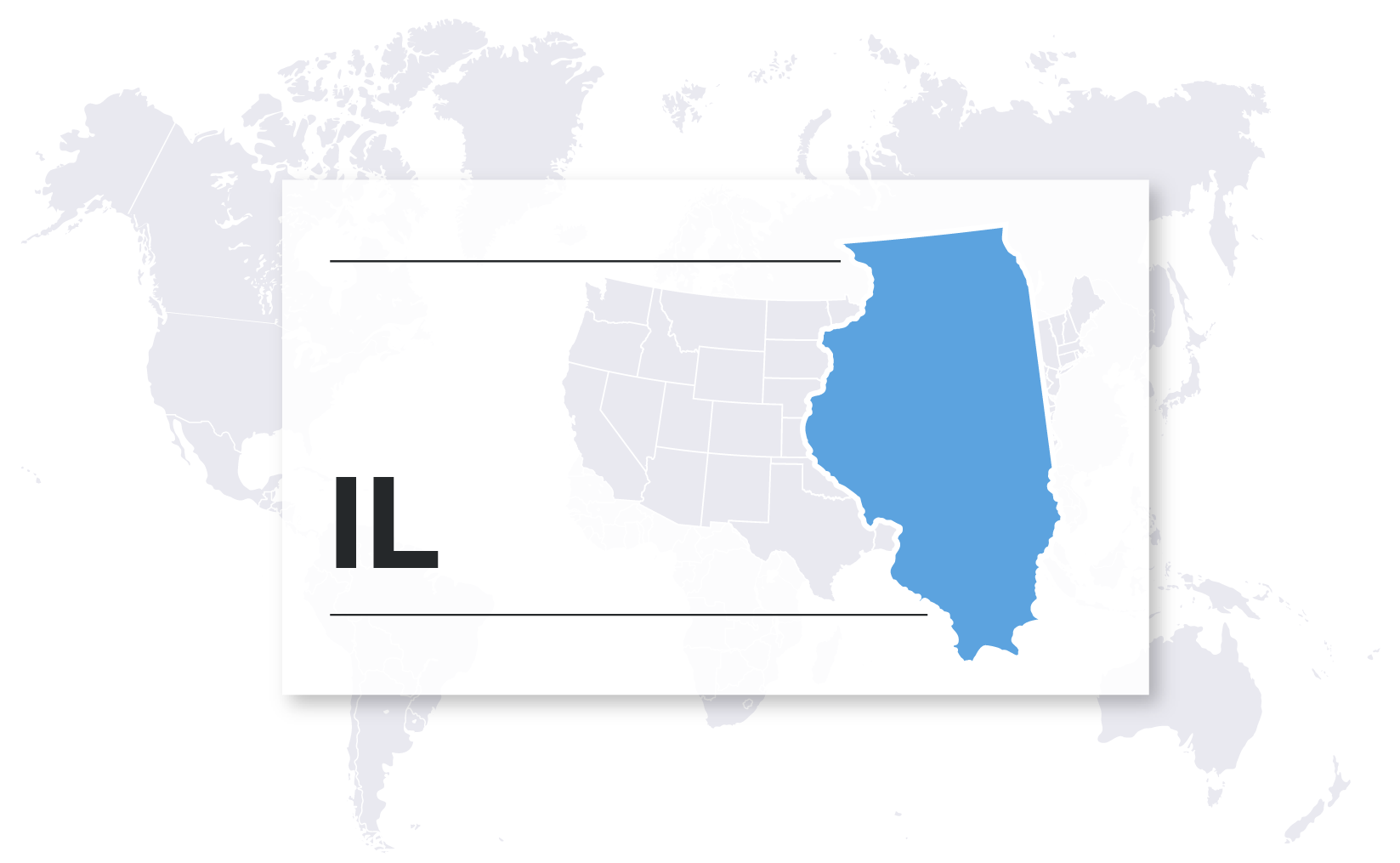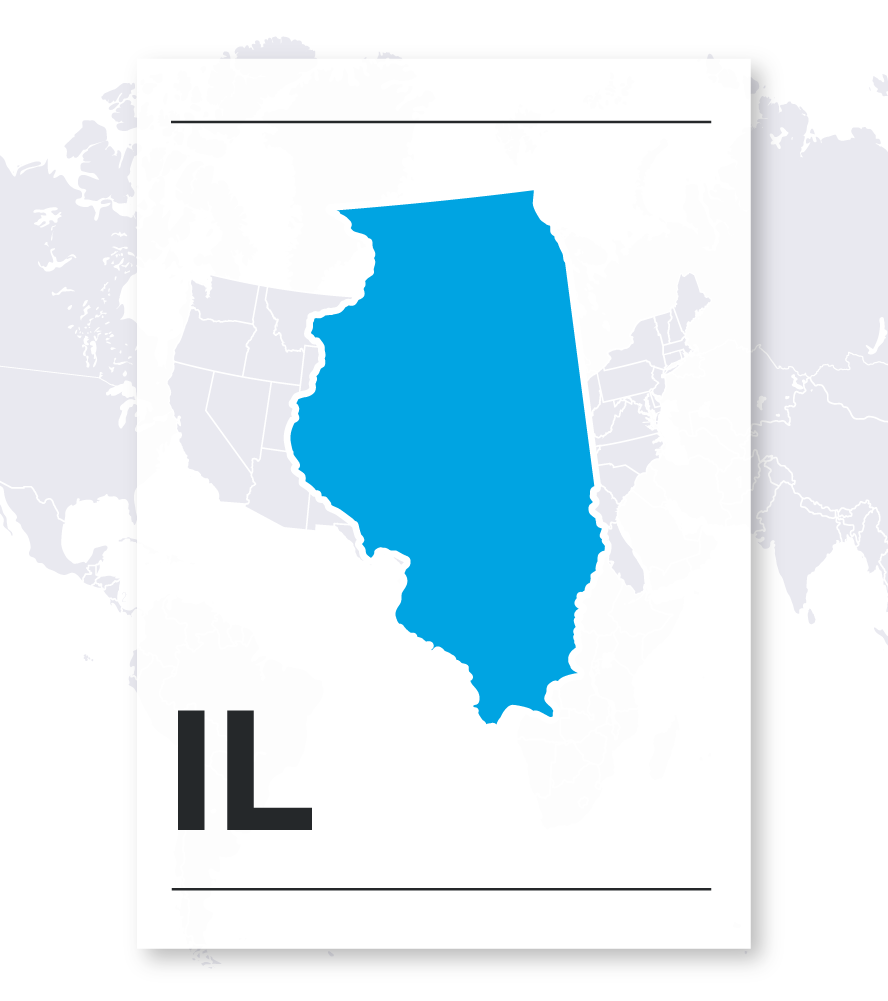Illinois Pay Data Reporting Guide


Introduction
In March 2021, SB1480 was passed in the state of Illinois, amending the state's Equal Pay Act of 2003, the Illinois Business Corporation Act, and the Illinois Human Rights Act. Private Illinois employers with 100 or more employees in Illinois and who are also required to file an EEO-1 report must now apply for and obtain an Equal Pay Registration Certificate (EPRC).
Illinois has some of the most stringent pay equity requirements in the United States, including an equal pay mandate for temporary workers, (HB2862 ) beginning April 1, 2024. Pay transparency legislation, (HB1329) comes into force on Jan. 1, 2025.
Contact us
Illinois Pay Data Reporting Requirements
Who Needs to Report?
Private employers with at least 100 employees in Illinois AND that are required to file an EEO-1 report are required to obtain an Equal Pay Registration Certificate.
What to Report?
Applicable employers must collect the following information for submission to Illinois Department of Labor (IDOL):
Employee Pay and Demographic Data: Employers must submit a detailed list (CSV format) of all employees employed during the calendar year immediately preceding the filing year. This employee level breakdown will contain information on employee's gender, race/ethnicity, earnings and job function, amongst other details.
Equal Pay Compliance Statement (EPCS): A corporate officer, legal counsel, or authorized agent of the business must certify compliance with, and implementation of, the Equal Pay Act of 2003, other federal and state anti-discrimination laws, and equal pay and opportunity policies.
Statements that require certification include:
- Compliance with Title VII of the Civil Rights Act of 1964 (42 U.S.C. § 2000e); The Equal Pay Act of 1963 (29 U.S.C. § 206); The Illinois Human Rights Act (775 ILCS 5); The Equal Wage Act (820 ILCS 110); and The Equal Pay Act of 2003 (820 ILCS 112);
- Confirmation that average pay for female (or minority) employees isn't consistently below the average pay for male (or non-minority) employees within each EEO-1 job category taking into account factors that can explain pay disparities, such as job requirements, experience, skill, effort, responsibility, education, location, and other mitigating factors.
- Decisions regarding an employee's job classification, as well as retention and promotion opportunities, are made without regard to sex.
- Wage and benefit disparities are corrected when identified.
- Wages and benefits of employees are evaluated on a regular cadence. Employers will need to specify the cadence of such evaluations.
- Employee compensation and benefits are determined using a non-discriminatory methodology. Employers will need to specify the method applied, such as:
-
- A market pricing approach.
- State Prevailing Wage or collective bargaining agreement requirements.
- A performance pay system.
- An internal analysis.
- An alternative approach.
Where and When to Report?
Applications for certification are made by submitting the Pay and Demographic Data Report and the certified EPRC compliance statement through the EPRC portal.
Deadline: Employers meeting the 100+ Illinois employee threshold will receive a deadline assigned by IDOL. If an eligible employer does not receive notice from IDOL, or if a business expands to 100 or more employees, they must submit their contact information to the department. IDOL's website will host an open link for businesses to enter their details to ensure compliance.
Cadence: Recertification is required every two years. New companies meeting the employee threshold must obtain an EPRC within three years of starting operations.
Illinois Employment Equity Standards
Equal Pay Act 2003: Illinois' Equal Pay Act prohibits employers with four or more employees from pay discrimination based on the "same or substantially similar work," unless mitigating factors apply such as seniority or merit systems. Specifically, the act has two protected classes, sex and African-American employees.
Equal Pay Mandate for Temporary Workers: HB 2862 significantly expands Illinois' Day and Temporary Labor Services Act . The mandate applies to temporary workers performing the same or substantially similar work on jobs which require "substantially similar skill, effort, and responsibility."
Contract workers must work for 90 days before the equal pay law applies, which excludes clerical and professional work. The calculation of 90 calendar days begins on April 1, 2024.
Illinois Pay Transparency Requirements
Pay transparency bill HB3129 comes into force on Jan. 1, 2025.
Every job listing must include "pay scale and benefits information" defined as "the wage or salary, or the wage or salary range, and a general description of the benefits and other compensation, including, but not limited to, bonuses, stock options, or other incentives the employer reasonably expects in good faith to offer for the position, set by reference to any applicable pay scale, the previously determined range for the position, the actual range of others currently holding equivalent positions, or the budgeted amount for the position, as applicable."
Employers can provide a hyperlink to a publicly viewable web page that includes the pay scale and benefits information. While the current salary history ban stays in place, companies can inquire about candidates' salary or wage expectations.
In addition, the bill requires organizations to post all opportunities for promotion to all current employees within 14 calendar days after an external job posting is published.
HB3129 applies to all Illinois employers with 15 or more employees, and to positions that are:
- Physically carried out (either partly, or in full) in Illinois; or
- Performed outside of Illinois but require employees to report to a supervisor, office, or other worksite in the state.
The Risks of Non-Compliance
Significant penalties apply for Illinois employers that do not comply with the EPRC.
EPRC: Applicable penalties include suspension or revocation of the EPRC and civil penalties up to $10,000.
Illinois Department of Labor may suspend or revoke an employer's EPRC under two conditions:
- If the employer fails to make good faith efforts to comply with the Illinois Equal Pay Act.
- If the employer has multiple violations of the anti-discrimination laws with which it certifies compliance.
Before revoking a certification, IDOL must carry out conciliation with the employer. Organizations that wish to challenge IDOL's decision to impose a fine or suspend or revoke an EPRC may request a hearing in writing within 20 calendar days.
Significant penalties apply for non-compliance with Illinois' pay equity laws:
Equal Pay Mandate: Penalties for violation range from $100 and $18,000 after the first audit. Subsequent violations will be subject to penalties ranging between $250 and $7,500 per violation. Each day that a violation continues is considered a separate violation.
Pay Transparency Legislation: Penalties for non-compliance range from $500-$10,000 per violation for job postings active at the time of the violation.
Can Trusaic Assist with Illinois Pay Data Reporting Compliance?
1. Comply - Use Trusaic's GPDR solution to complete required reporting by compliance deadlines:
Applicability Determination: Perform an accurate assessment of your applicability, according to jurisdictional specific definitions and regulatory frameworks so you can understand your reporting obligations across the globe.
Deadline Management: Prepare ahead of time with project timelines, timely notifications, and reminders, to keep you on track to meeting jurisdictional deadlines.
- A. Employee Pay and Demographic Data
- Guidance: Trusaic will provide guidance and support on accurately determining applicability, gathering the necessary data and information for collection and subsequent submission and assistance on when, where and how to submit to IDOL.
- Data Quality Assurance: Trusaic will run data quality checks to ensure alignment with the standards and definitions provided by IDOL.
- Risk Assessment: Trusaic will perform a risk assessment based on the data submission requirements to analyze the risk of an EPRC audit. Our risk assessment process analyzes the data being submitted to offer insight into how IDOL may interpret pay gaps in the organization.
- Report Output: Trusaic will provide clients with the correctly formatted output for submission.
- B. Equal Pay Compliance Statement Certification
- Illinois-Specific Pay Equity Analysis: To assist with certification of compliance statement 2, Trusaic will perform an ongoing Pay Equity regression analysis to assess whether compensation discrepancies persist between female and minority IL employees compared to their male and non-minority IL counterparts, when taking legitimate wage influencing factors into account.
- Corrective Measures and Remediation Options: If pay disparities persist, Trusaic will provide remediation options for Illinois employees that pose as a compliance risk, to assist with certification of compliance statement 4 (Wage and benefit disparities are corrected when identified).
- Wage and Benefit Methodological Sign-Off: For clients performing an ongoing PayParity analysis, employers are able to sign off on the cadence of such analyses (statement 5) and the approach utilized (statement 6).
Reporting Checklist: Follow step-by-step guidance on where, when and how to report to any jurisdiction's regulatory body, as well as your required internal disclosure and public posting obligations.
2. Correct - Use PayParity and OpportunityParity to understand, explain and resolve pay disparities:
Ongoing Pay Equity: In order to confidently certify the EPRC compliance statement, employers must perform an ongoing Pay Equity analysis to identify and correct pay disparities. Ongoing monitoring of pay disparities will reduce risk of potential suspension or revocation of employers' Equal Pay Registration Certificate and potential civil penalties.
Identify Barriers to Professional Growth: OpportunityParity™, a feature of Trusaic's workplace equity analysis software , offers a complete solution for pinpointing and remedying equity concerns in your organization's hiring, promotion, and retention processes.
3. Communicate - Use Trusaic's Workplace Equity Solution to communicate narratives and share salary ranges with confidence:
Pay Equity Narrative: Communicate the sources of your pay gaps, progress objectives, and corrective measures to employees and internal stakeholders with Trusaic's Workplace Equity product suite.
Show data-backed progress in your pay gaps over time.
Salary Range Explainability: Use Salary Range Finder to establish and post competitive and equitable pay ranges to confidently comply with pay transparency laws.
Mitigate Risk of Recurrent Pay Disparities: Ensure new hires receive fair pay offers with the use of external labor market data and internal pay equity analytics to reduce unplanned and expensive pay remediations.
Sign up for PayParity by April 30, 2024
and receive OpportunityParityTM at no additional cost
Sign up for PayParity by April 30, 2024 and receive OpportunityParityTM at no additional cost
